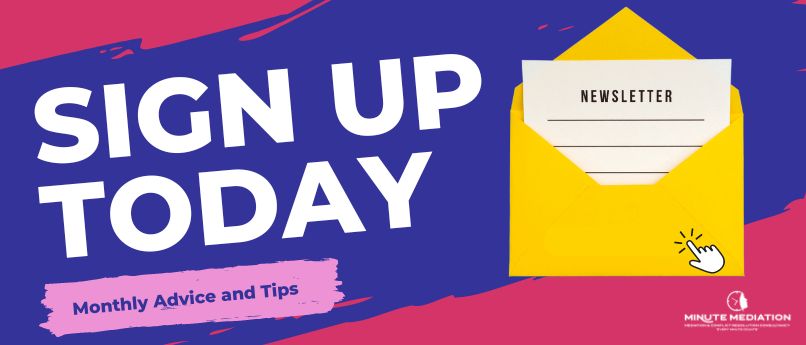Unlocking Productivity: Overcoming Text Messaging Challenges in SME Projects

In today’s fast-paced business landscape, effective communication is the cornerstone of successful project management, particularly for small and medium-sized enterprises (SMEs). However, the reliance on text messaging apps for internal communication within SMEs often leads to unforeseen challenges and conflicts among team members. This article aims to explore the common pitfalls of using text messaging apps in SME project management and offers insights into alternative communication channels to foster better collaboration and minimize conflicts.
Target Audience
– SME Owners: Entrepreneurs and business owners looking to optimize their project management processes and improve team communication.
– Managers: Team leaders and project managers seeking strategies to enhance communication effectiveness and streamline workflows.
– Team Members: Employees and staff members involved in project execution, interested in learning about communication best practices to improve productivity and collaboration.
The Role of Text Apps in SMEs
Text messaging apps like WhatsApp, Slack, and Microsoft Teams play a vital role in the day-to-day operations of small and medium-sized enterprises (SMEs). These apps have become indispensable tools for SMEs, facilitating quick and convenient communication among team members, regardless of their physical location. Here’s how text apps contribute to the functioning of SMEs:
- Instant Connectivity Text messaging apps provide instant connectivity, allowing SME team members to communicate in real-time. Whether it’s sharing updates, coordinating tasks, or seeking clarification, these apps enable swift and efficient communication within SMEs.
- Accessibility With the majority of employees owning smartphones, text messaging apps are easily accessible to SME staff members. This accessibility ensures that team members can stay connected and informed even when they are on the go or working remotely.
- Cost-Effective Communication Text messaging apps offer a cost-effective communication solution for SMEs, eliminating the need for expensive phone calls or traditional messaging services. This affordability makes text apps an attractive option for SMEs looking to minimize communication expenses.
- Group Chats and Collaboration Text messaging apps allow SME teams to create group chats, facilitating collaboration and teamwork. Team members can easily share documents, discuss project details, and brainstorm ideas within these group chats, enhancing productivity and efficiency.
- Notification Alerts Text messaging apps provide notification alerts for incoming messages, ensuring that team members are promptly notified of any updates or important announcements. These alerts help SMEs maintain timely communication and address urgent issues in a timely manner.Overall, text messaging apps like WhatsApp play a crucial role in enabling seamless communication and collaboration within SMEs, contributing to improved productivity and project outcomes.
Challenges in Communication
Despite their widespread use and convenience, text messaging apps in SMEs also pose significant challenges in communication, leading to conflicts and misunderstandings among team members. Here are some of the key issues associated with using these apps:
Misinterpretation One of the most significant challenges with text messaging apps is the risk of misinterpretation. Without the context provided by tone of voice or body language, messages can be easily misunderstood, leading to confusion and friction among team members. A simple message intended to be humorous or casual may be perceived as rude or offensive, resulting in strained relationships and reduced morale within the team.
Difficulty Conveying Tone Text messaging apps often fall short in conveying tone effectively. Unlike face-to-face or phone conversations, where tone of voice provides valuable cues about the speaker’s emotions and intentions, text messages lack this nuance. As a result, messages may come across as abrupt or insensitive, even if they were intended to be polite or friendly. This can lead to hurt feelings, resentment, and interpersonal conflicts among team members.
Lack of Clarity Text messages are inherently limited in terms of the amount of information they can convey. Unlike face-to-face or verbal communication, which allows for immediate clarification and elaboration, text messages must be concise and to the point. As a result, important details may be omitted or misunderstood, leading to incomplete tasks, missed deadlines, and project delays.
Information Overload In SMEs where text messaging apps are the primary mode of communication, team members may be inundated with a constant stream of messages and notifications. This information overload can be overwhelming, making it difficult for team members to prioritize tasks and stay focused on their work. Important messages may get lost in the noise, resulting in missed opportunities or overlooked issues.
Conflict Escalation Finally, the limitations of text messaging apps can exacerbate conflicts within SME teams. Misunderstandings and miscommunications that might have been easily resolved through face-to-face or verbal communication can escalate into larger conflicts when conveyed through text messages. Without the opportunity for immediate clarification or resolution, grievances may fester, leading to strained relationships and decreased team cohesion.
Overall, while text messaging apps offer convenience and accessibility, they also present significant challenges in communication within SMEs. Addressing these challenges requires SMEs to recognize the limitations of text messaging apps and implement strategies to mitigate their impact, such as using alternative communication channels or establishing clear communication norms and protocols.
Difficulty Conveying Urgency and Tone
Another significant challenge posed by text messaging apps in SME communication is the difficulty in conveying urgency and tone effectively. Unlike face-to-face or phone conversations, where urgency can be conveyed through tone of voice and immediate response, text messages lack this immediacy, leading to potential misunderstandings and delays in addressing critical issues.
Case study

Imagine a scenario where a project manager urgently needs a team member to address a critical issue that has arisen with a client. The project manager sends a text message to the team member, stating, “Can you please review the client’s feedback and address the issues ASAP?”
Now, while the project manager intended for the message to convey a sense of urgency, the recipient may interpret it differently. Without the cues provided by tone of voice or facial expressions, the recipient may perceive the message as just another task to be completed at their convenience, rather than an urgent matter requiring immediate attention.
As a result, the recipient may delay responding to the message, assuming that it can wait until they have completed their current task or until they have more time to devote to it. Meanwhile, the critical issue with the client remains unresolved, potentially leading to dissatisfaction and strain on the client relationship.
Now you may be wondering the word “urgent” has been used in the text, however, the recipient may not interpret the message as urgent due to several reasons:
Ambiguity of Text Text messages lack the tone of voice and facial expressions that provide context in verbal communication. As a result, the urgency conveyed by the word “ASAP” may not be as clear as it would be in a face-to-face conversation or a phone call.
Perception of Priority The recipient may perceive the task mentioned in the message as just one of many tasks on their to-do list. Without additional context or clarification from the sender, they may not realize the critical nature of the issue or the urgency of addressing it promptly.
Busy Workload The recipient may be preoccupied with other tasks or responsibilities at the time they receive the message. In a busy work environment, individuals may prioritize tasks based on their perceived importance or deadlines, leading them to delay addressing tasks that are not explicitly labelled as urgent.
Previous Communication Patterns If the sender and recipient have established a pattern of casual or non-urgent communication in the past, the recipient may not automatically interpret messages as urgent unless explicitly stated otherwise.
Overall, the lack of immediate feedback and contextual cues in text messaging can lead to varying interpretations of urgency, highlighting the challenges of conveying urgency effectively through this communication medium.
Alternative Communication Channels for SMEs
While text messaging apps play a significant role in SME communication, they are not always the most effective or appropriate means of communication, particularly for complex or urgent matters. SMEs can benefit from exploring alternative communication channels that offer more clarity, context, and functionality. Here are some practical solutions:
Face-to-Face Meetings
- Schedule regular face-to-face meetings, either in-person or via video conferencing platforms, to facilitate direct communication and collaboration among team members.
- Use face-to-face meetings for important discussions, brainstorming sessions, and decision-making processes that require real-time interaction and feedback.
Video Calls
- Utilize video conferencing tools like Zoom, Microsoft Teams, or Google Meet for virtual meetings, particularly when face-to-face interactions are not feasible.
- Conduct video calls for team check-ins, project updates, and client meetings to ensure clear communication and foster a sense of connection among remote team members.
Project Management Tools
- Implement project management tools such as Asana, Trello, or Monday.com to centralize communication and collaboration within the SME.
- Use project management tools to create task lists, assign responsibilities, track progress, and communicate updates in a structured and organized manner.
- Leverage email for formal communication, document sharing, and long-form discussions that require detailed information or documentation.
- Use email to communicate with external stakeholders, clients, and partners, providing a professional and reliable means of correspondence.
Phone Calls
- Encourage the use of phone calls for urgent matters or sensitive discussions that require immediate attention or confidentiality.
- Use phone calls to clarify complex issues, resolve conflicts, and provide real-time feedback, fostering clear and effective communication among team members.
In-Person Workshops and Training Sessions
- Organize in-person workshops or training sessions to facilitate team building, skills development, and knowledge sharing among SME employees.
- Use in-person sessions to foster collaboration, creativity, and innovation within the SME, promoting a culture of continuous learning and improvement.
Internal Messaging Systems
- Implement internal messaging systems within the SME, such as Slack or Microsoft Teams, to facilitate real-time communication and collaboration among team members.
- Use internal messaging systems for quick questions, informal discussions, and team announcements, providing a centralized platform for communication within the organization.
By exploring and implementing alternative communication channels, SMEs can overcome the limitations of text messaging apps and enhance communication effectiveness, collaboration, and productivity within the organization.
Best Practices for Effective Communication in SMEs
Effective communication is essential for the success of small and medium-sized enterprises (SMEs). To optimize communication within the organization and foster a collaborative and productive work environment, SMEs can implement the following best practices:
Clarity and Brevity
- Encourage team members to communicate clearly and concisely, avoiding jargon or overly technical language that may be difficult to understand.
- Emphasize the importance of brevity in communication, encouraging team members to get to the point quickly and avoid unnecessary elaboration or repetition.
Active Listening
- Promote active listening skills among team members, encouraging them to fully engage with and understand the perspectives of their colleagues.
- Encourage paraphrasing and summarizing during discussions to ensure that messages are accurately received and understood.
Open and Transparent Communication
- Foster an environment of open and transparent communication, where team members feel comfortable sharing their ideas, concerns, and feedback.
- Encourage regular communication and updates on project progress, milestones, and challenges, keeping everyone informed and engaged in the process.
Respect and Empathy
- Promote a culture of respect and empathy within the organization, where team members treat each other with kindness, understanding, and consideration.
- Encourage empathy by asking team members to consider the perspectives and feelings of their colleagues when communicating, particularly in sensitive or challenging situations.
Use of Multiple Communication Channels
- Recognize that different communication channels are suitable for different types of communication and tasks.
- Encourage the use of face-to-face meetings, video calls, phone calls, and email, in addition to text messaging apps, to ensure that messages are conveyed effectively and appropriately.
Clear Communication Norms and Protocols
- Establish clear communication norms and protocols within the organization, outlining when and how different communication channels should be used.
- Provide guidelines for responding to messages, setting expectations for response times and levels of urgency based on the nature of the communication.
Regular Feedback and Check-ins
- Implement regular feedback mechanisms and check-ins to solicit input from team members and assess communication effectiveness.
- Use feedback to identify areas for improvement and implement strategies to address communication challenges or issues as they arise.
Training and Development
- Invest in training and development programs to enhance communication skills among team members.
- Provide resources and opportunities for team members to learn effective communication techniques, such as active listening, conflict resolution, and assertive communication.
By implementing these best practices, SMEs can create a culture of effective communication that supports collaboration, innovation, and success within the organization.
In today’s hustle and bustle of running a business, communication plays a pivotal role in the success of small and medium-sized enterprises (SMEs). In our journey to streamline communication within our SME, we’ve encountered various challenges with text messaging apps. For instance, misinterpretations have led to confusion and delays, especially when urgency wasn’t conveyed effectively. Take, for example, a situation where a critical client issue needed immediate attention. Despite using the word “ASAP” in a text message, the urgency wasn’t fully grasped by the recipient, resulting in a missed opportunity to address the issue promptly.
To overcome such hurdles, we’ve explored alternative communication channels like face-to-face meetings and video calls. These channels allow for clearer communication and better understanding among team members. Additionally, implementing best practices such as active listening, transparency, and empathy has helped us foster a culture of effective communication within our SME. By investing in training and development programs, we’ve further enhanced our team’s communication skills, leading to improved collaboration, innovation, and overall success.
In conclusion, navigating communication challenges in SMEs requires a personal touch and a willingness to explore alternative solutions. By learning from experiences like the one mentioned above and adopting best practices, SMEs can create a communication-friendly environment that fuels growth and success.
WHO ARE MINUTE MEDIATION?
Mediation has undoubtedly become an evolving reality today. The demand for trusted mediators has also been rapidly increasing. So, if you are also struggling with a dispute due to a conflict situation in your workplace or community don’t panic anymore.
Minute Mediation Ltd is experienced in facilitating disputes and finding the best possible solutions to help you and your partners find common ground and resolve issues.
So what is the wait for?
Get in touch with us because every minute counts!
Click here for a free 15 minute consultation.

